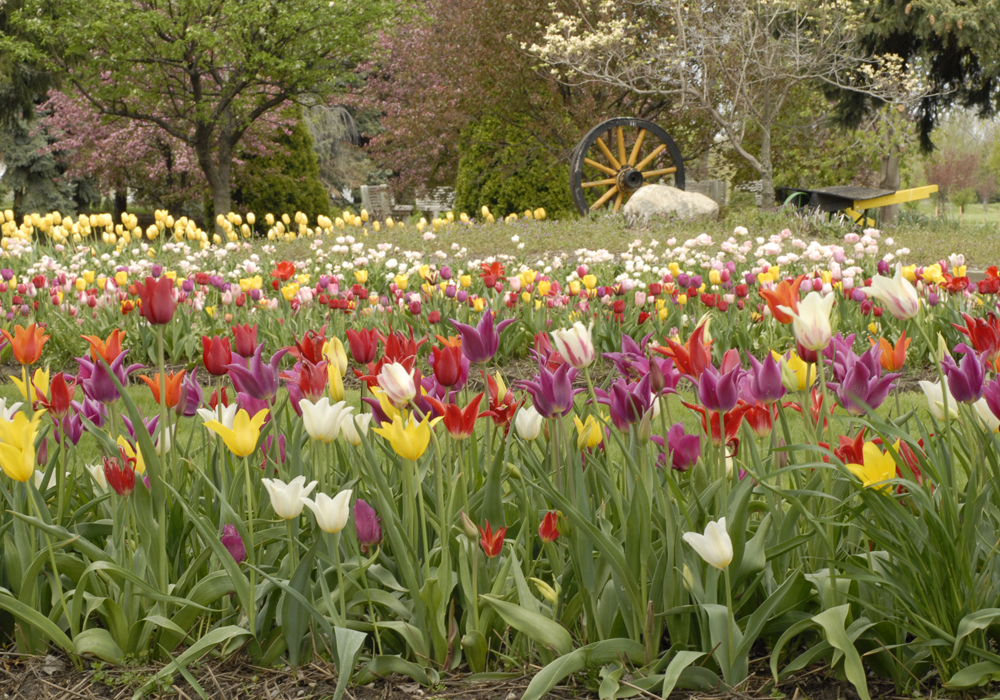12 tips for gardening sustainably, anywhere
Sustainable Gardening Institute

For many of us, gardening is about going outside, getting our hands dirty and growing our own, delicious produce and fragrant flowers. It’s one of the most relaxing activities in the world. It can also be a way to give back to nature and your local ecosystem. We are very excited to partner with Lois J. de Vries and the Sustainable Gardening Institute to bring you her 12 Tips: How To Garden Sustainably Anywhere!
About Lois de Vries
Lois has been an avid gardener for many years. She remembers foraging for mushrooms and blueberries with her Grandmother at the age of six. After graduating with a Bachelor in Geology from Rutgers University, she went on to chair the GardenComm International Sustainability Committee for seven years. “Even just five years ago, it was very difficult to find vetted, reliable sustainable gardening research and information,” she says. That was what motivated her to create the Sustainable Gardening Institute and its library, a one-stop-resource for reliable, sustainable gardening and farming information.
What you’ll find at the Sustainable Gardening Institute
Today, the Sustainable Gardening Institute’s library boasts a rich online, easy-to-use, curated collection of resources, documents, images, illustrations, maps, and videos provided by experts from public gardens, arboreta and other non-profit educational organizations; colleges and universities; and government agencies. From beneficial insects and soils to storm water management and everything (and we mean everything) in between, The Sustainable Gardening Library has it all.
“I have a big-picture, long-term vision that keeps me focused on the links between the health of the natural world and the well-being of humanity. If we don’t keep the environment healthy, our families won’t be healthy either.”
–Lois J. de Vries.
Lois has dedicated her life to transforming the built environment into a sustainable ecosystem. She believes sustainable practices can be incorporated into any garden without compromising variety, beauty, or design. And the best part? You’re helping the planet along the way: reducing weed spread into natural areas; reducing energy consumption and greenhouse gas emissions; and reducing harm to wildlife from horticultural chemicals.
Tips for gardening sustainably, anywhere
Here are Lois’s 12 tips and tricks to set you off on the right path.
1.) Put the right plant in the right place. Seems simple enough but a little research up front will save you water, soil additives and maintenance down the line. Companion planting and adapted native plants are a no brainer for a sustainable ecosystem.
2.) Make your own compost. Get rid of your kitchen scraps AND save money on commercial fertilizer. Plus your garden will love you for adding back the essential nutrients, microbes and fungi to the soil.
3.) Mulch correctly. Forget volcano mulching! Two inches of wood or bark chips will do the trick. This will reduce watering, eliminate weeds and insulate roots during the summer and winter seasons.
4.) Install a bioswale or gravel edge along the driveway and other hardscaping. Slow down the flow of stormwater on your property reducing the need for supplementary watering.
5.) Downsize or eliminate your lawn. Consider planting low or no-mow grasses and replace sections with beds of shrubs or drought tolerant perennials.




6.) Leave the leaves. Use leaves for compost or rake them straight into your plant beds. On a larger property you can even create a brush pile, providing food for your garden plants and also shelter for butterfly eggs, bumble bees and many other beneficial garden residents.
7.) Keep dried stalks of decorative grasses and perennials in place. Not only will you provide visual interest for your winter garden, but you will also be creating a home for bees and insects to protect their eggs.
8.) Water plants only when they need it. Conserve water by redirecting from gutter downspouts straight into garden beds, bioswale, cistern or a rain barrel. Use a rain gauge and only water when necessary using a watering can or drip irrigation.
9.) Eliminate pesticides whenever possible. Use a high pressure water sprayer to flush bugs away or try learning to live with minor insect damage and wait to see if natural predators come to your rescue.
10.) Don’t plant invasive species. Check the list of invasive species for your area and don’t plant them even if you see them for sale at your local garden centre.
11.) Add landscape lighting only when and where it’s needed. Light pollution actually affects the inner clocks of bugs, birds and, of course, plants. If you feel you need lighting, make sure they have an attached shade and are directed downward. Turn lights off when you are not outdoors.
12.) Become active in your local community. Homeowner association rules and town ordinances in your area have most probably not been reviewed in decades. Get on to your local authorities and see what sustainable landscaping practices can be adopted.




These are just a few things you can all do to help transform the world into a sustainable ecosystem. For more details on each of the tips, check out 12 Tips: How To Garden Sustainably Anywhere. And don’t forget to check out The Sustainable Gardening Library for in-depth expert advice.






